#iot waste management solutions
Explore tagged Tumblr posts
Text
#iothealthcaredubai #iotsolutionsinuae #iottrackingsystem #iot
#iotsmartsolutions #iotcompaniesinuae #iothealthcaredevices
IoT (Internet of Things) solutions encompass a wide range of applications and technologies that connect physical devices to the internet, allowing them to collect and exchange data. Here are some common IoT solutions across various industries:
Smart Home Automation: IoT devices such as smart thermostats, lights, locks, and cameras enable homeowners to remotely monitor and control their homes via smartphone apps or voice commands.
Industrial IoT (IIoT): In manufacturing and industrial settings, IoT sensors and devices are used for predictive maintenance, asset tracking, supply chain optimization, and real-time monitoring of equipment and processes to improve efficiency and safety.
Smart Cities: IoT technology is employed to manage urban infrastructure and services, including smart transportation systems (traffic monitoring, parking management), environmental monitoring (air and water quality), waste management, and public safety.
Healthcare IoT: Wearable devices, remote patient monitoring systems, and connected medical equipment help healthcare providers track patient health data, improve treatment outcomes, and enable telemedicine services.
Agriculture: IoT solutions like precision agriculture use sensors, drones, and data analytics to optimize farming practices, monitor crop conditions, manage irrigation, and increase yields while conserving resources.
Retail: IoT devices such as beacons and RFID tags facilitate inventory management, personalized marketing, and seamless checkout experiences for customers.
Energy Management: IoT-enabled smart grids and meters enable better monitoring and management of energy consumption, leading to more efficient energy distribution and reduced costs.
Logistics and Supply Chain: IoT solutions provide real-time visibility into the movement and condition of goods throughout the supply chain, enhancing inventory management, tracking shipments, and improving overall efficiency.
Environmental Monitoring: IoT sensors monitor environmental parameters such as air quality, temperature, humidity, and pollution levels in urban and remote areas, helping to manage natural resources and mitigate environmental risks.
Vehicle Telematics: IoT technology is used in vehicles for fleet management, remote diagnostics, predictive maintenance, and in-car infotainment systems.
These are just a few examples, but IoT solutions have the potential to revolutionize many aspects of our lives and industries by enabling data-driven decision-making, automation, and connectivity.
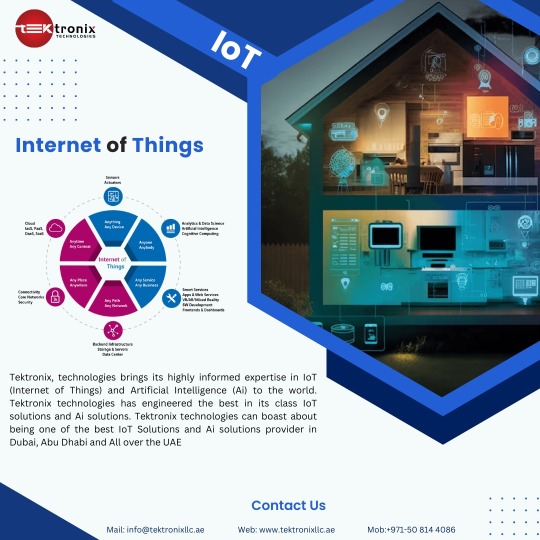
#iot companies in abu dhabi#iot solutions in uae#iot tracking system in sharjah#iot companies in alain#iot app development abu dhabi#iot sansor#iot sansor abu dhabi#iot tracking#iot app development#iot app development uae#iot solutions#iot solutions in bur dubai#artificialintelligence#iot tracking system in uae#iot healthcare dubai#iot healthcare in abu dhabi#iot healthcare in alain#iot healthcare in ajman#iot healthcare in bur dubai#iothealthcaredevicesdubai#iothealthcaredevicesinuae#iothealthcaredevicesinsharjahinalain#iot waste management solutions#iot waste management solutions uae#iot waste management solutions in uae#iot waste management solutions in sharjah#iot waste management solutions ajman#iot waste management solutions bur dubai#iot waste management solutions alain#iot waste management solutions in alain
0 notes
Text
Revolutionizing Waste Management with IoT Solutions
In today's world, waste management has emerged as a critical challenge that demands innovative solutions. With the global waste crisis escalating, the adoption of IoT technology holds tremendous promise in reshaping the landscape of waste handling. Bridgera, a leading IoT system integrator, is at the forefront of this revolution, offering cutting-edge solutions that are renewing the face of waste management.
The World Bank reports a staggering annual production of 201 billion tonnes of municipal solid waste worldwide, with only a concerning 33 percent being managed sustainably. Projections indicate a further surge to 340 billion tonnes by 2050. In response to this mounting challenge, cities and waste management companies are increasingly turning to the power of IoT in waste management.
IoT waste management encompasses smart systems that leverage interconnected devices and sensors to optimize waste collection, disposal, and recycling processes. By integrating IoT data integration and device configuration, these systems enable real-time monitoring, efficient route planning, and predictive maintenance, leading to significant cost reductions and environmental benefits.
The benefits of implementing IoT solutions in waste management are numerous, encompassing optimized waste collection routes, increased operational efficiency, improved recycling rates, data-driven decision-making, and cost reduction. By leveraging IoT technology, waste management organizations can streamline operations, reduce fuel consumption, and promote environmental sustainability.
Comprehensive IoT waste management systems typically include IoT devices, connectivity, data integration, data analytics, and device configuration. Real-world applications of IoT in waste management have demonstrated significant potential, with smart bin solutions optimizing collection routes, reducing missed pickups, and enhancing overall operational efficiency.
While IoT technology presents immense opportunities for transforming waste management, challenges such as data security, infrastructure, interoperability, and cost must be addressed to unlock its full potential. Overcoming these hurdles can pave the way for a more sustainable and efficient waste management ecosystem, driving towards cleaner and greener cities.
The integration of IoT waste management into urban infrastructure is rapidly expanding, promising a future where cities are cleaner, more efficient, and sustainable. With advancements in predictive analytics, waste composition analysis, citizen engagement, and circular economy practices, the future of waste management looks promising.
Bridgera, headquartered in Raleigh, USA, is driving innovation in waste management by leveraging IoT technology to deliver efficient and sustainable IoT solutions to its clients. By optimizing waste collection routes, enabling real-time waste level monitoring, improving waste categorization, and promoting data-driven decision-making, Bridgera is contributing to a cleaner, more sustainable future.
In conclusion, the synergy between IoT technology and waste management offers a promising path towards a more sustainable future. By partnering with Bridgera, businesses and municipalities can revolutionize their waste management operations, reducing environmental impact and promoting a greener tomorrow.
0 notes
Text
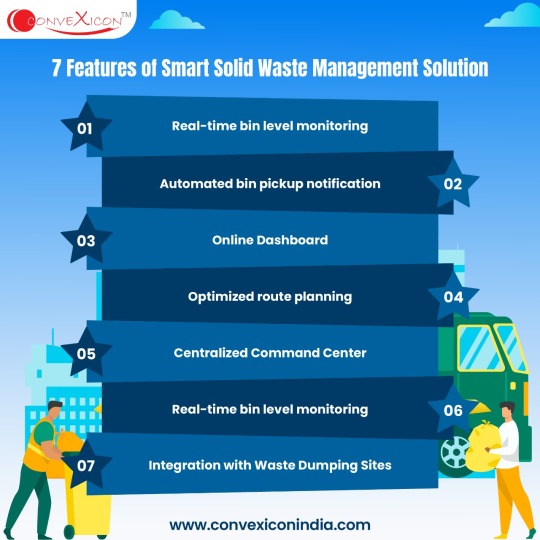
7 features of smart solid waste management solution
#iot#iottechnology#software#technology#waste management#zero waste#solid waste management#smart solutions#innovation
0 notes
Text
Harnessing technology: The future of precision agriculture
By Vyankatesh Sharma, CEO and Founder, NEEL-INITIATIVE
In today’s fast-paced digital age, agriculture is no longer confined to traditional tools and methods. The industry is witnessing an unprecedented transformation, driven by cutting-edge technology, advanced artificial intelligence (AI), and innovative precision farming solutions. At NEEL-INITIATIVE, we are proud to lead this evolution, empowering farmers worldwide with high-tech agricultural machinery that redefines farming as a sustainable and rewarding lifestyle.
As the CEO and founder of NEEL-INITIATIVE, I am passionate about leveraging technology to revolutionize agriculture. Our mission is clear: to enhance productivity, reduce resource wastage, and provide farmers with a lifestyle worth living through state-of-the-art solutions tailored for modern needs.
The Agricultural Revolution
The agriculture industry is at the crossroads of change, with global challenges such as climate change, resource scarcity, and a rapidly growing population demanding innovative solutions. By 2050, the world will need to produce 70% more food to sustain nearly 10 billion people. Traditional farming techniques cannot meet this demand alone.
This is where precision agriculture comes in—a game-changing approach that uses technology to maximize efficiency, enhance crop yields, and promote sustainable farming practices. Precision agriculture not only optimizes farming inputs but also ensures that resources like water, fertilizers, and pesticides are used judiciously.
The Role of Technology in Precision Farming
At NEEL-INITIATIVE, we harness the power of AI-driven technologies, machine learning, and IoT-enabled agricultural machinery to deliver intelligent solutions.
Here are the key ways in which our technology is revolutionizing farming:
1. AI-Enhanced Agricultural Machinery
Our AI-powered machines are designed to make farming smarter and more efficient. From automated tractors to smart harvesters, these machines collect and analyze data in real time, offering insights that drive better decisions. They assess soil conditions, monitor crop health, and even predict the best time for planting and harvesting.
2. Data Analytics for Smart Farming
Data is the lifeblood of modern agriculture. Using drones, satellite imaging, and IoT sensors, our systems gather precise data on variables like soil fertility, moisture levels, and crop performance. This data is processed by AI algorithms, providing farmers with actionable insights to optimize every aspect of their operations.
3. Sustainable Resource Management
Sustainability is a core value at NEEL-INITIATIVE. Our solutions help conserve resources by employing advanced precision irrigation systems, which deliver the exact amount of water needed. By minimizing waste, farmers can cut costs and reduce their environmental footprint.
4. Predictive Analytics for Risk Mitigation
Through predictive models powered by machine learning, we offer farmers tools to anticipate weather changes, pest infestations, and disease outbreaks. This proactive approach helps farmers mitigate risks and improve crop resilience.
5. Blockchain for Food Traceability
Consumers today are demanding greater transparency in the food supply chain. Our technology incorporates blockchain solutions that provide end-to-end traceability, ensuring that every step of the production process is accountable and reliable.
NEEL-INITIATIVE: Leading the Future of Farming
At NEEL-INITIATIVE, we are not just building machines; we are building a legacy of innovation and empowerment. Our high-tech machinery is specifically engineered to address the unique challenges faced by farmers.
When I founded NEEL-INITIATIVE, my vision was to create a company that goes beyond selling products—we provide transformative artificial intelligence solutions that integrate seamlessly into the lives of people. Our systems are designed to enhance efficiency, promote sustainability, and ensure maximum profitability for farmers.
Why Choose NEEL-INITIATIVE?
Advanced AI Technology: Our agricultural machines are powered by cutting-edge artificial intelligence that continually learns and improves.
Ease of Use: Our tools are user-friendly, ensuring that farmers of all skill levels can adopt them without hassle.
Cost Efficiency: We design scalable solutions that fit farms of all sizes, making advanced technology affordable for small-scale farmers.
Training and Support: We offer comprehensive training programs to help farmers maximize the potential of our solutions.
A Lifestyle Worth Living
At NEEL-INITIATIVE, our tagline, "Providing a lifestyle worth living," reflects our dedication to enriching farmers' lives. Our mission is not just to improve agricultural practices but to create a future where farming is fulfilling, efficient, and environmentally responsible.
Our solutions enable farmers to:
Monitor fields remotely using mobile apps.
Optimize resources to cut costs and increase yields.
Reduce labor-intensive tasks through automation.
Make data-driven decisions for long-term success.
Overcoming Challenges
While the benefits of precision agriculture are undeniable, the road to adoption comes with challenges, including:
Lack of Awareness: Educating farmers about the potential of precision agriculture is a critical task.
Digital Divide: Bridging the gap in access to digital infrastructure is essential for widespread adoption.
At NEEL-INITIATIVE, we address these challenges by providing:
Flexible Financing Options: Helping farmers access the tools they need without financial strain.
Educational Outreach: Conducting workshops and training sessions to showcase the advantages of precision farming.
Accessible Solutions: Designing equipment that works efficiently even in areas with limited connectivity.
The Future of Agriculture
The future of agriculture lies in embracing technology and innovation. Precision agriculture is no longer a luxury—it is a necessity. By integrating AI, IoT, and big data analytics into farming, we can address the challenges of feeding a growing population while preserving the planet’s resources.
At NEEL-INITIATIVE, we are proud to be at the helm of this transformation. Our advanced tools and machinery are paving the way for a brighter, more sustainable future in agriculture.
Join the Revolution
As the CEO of NEEL-INITIATIVE, I invite farmers, technologists, and stakeholders to join us in shaping the future of farming. Together, we can create an ecosystem where technology and nature coexist harmoniously.
The future of agriculture is here, and at NEEL-INITIATIVE, we’re building it one innovation at a time.
Vyankatesh Sharma CEO and Founder, NEEL-INITIATIVE
#artificial intelligence#startup#agriculture#neelinitiative#vyankatesh sharma#economy#robust#technology#farming#sustainablefarming#NEEL-INITIATIVE
2 notes
·
View notes
Text
How IoT Application Development is Transforming Smart Cities and Homes?

IoT Application Development is becoming a major actor in transforming residential and commercial environments in the current society. The development of IoT technology has made it possible for smart homes and smart cities—where IoT-enabled smart devices cooperate to offer an improved living environment.
This change addresses sustainability, efficiency, safety, and convenience as well as others. Companies like SSTech System are setting the standard for IoT development and are causing a major change in our interaction with our surroundings.
The role of IoT application development in smart cities
The progress of smart cities depends much on IoT application development in Australia. IoT technology’s inclusion into urban infrastructure is enabling cities to grow more environmentally friendly, effective, and resident-responsive. Globally, smart city IoT solutions are being used since they offer real-time data and insights that help managers and municipal planners to make wise decisions.
Smart city traffic management is one of the main areas IoT application development is transforming. IoT-enabled smart devices let cities track traffic, ease congestion, and maximize public transit systems. This lowers carbon emissions, thereby helping to create sustainable smart cities, and enhancing the daily commute for residents.
IoT environmental monitoring is another quite important factor. Among other environmental elements, IoT development has made it possible to install sensors tracking air quality, noise levels, and water quality all around. This information is priceless in guaranteeing that city stays habitable and in enabling fast reactions to environmental hazards.
Management of Energy Another field where IoT application development is changing metropolitan environments is IoT. IoT technology lets cities maximize public building energy use, street lighting, and other infrastructure. In addition to saving money, this greatly helps a city’s total energy impact to be lessened.
Points to Consider:
Integration of Internet of things in urban areas depends on IoT application development.
Smart city traffic management and IoT environmental monitoring are key areas benefiting from IoT development.
Energy management IoT solutions contribute to the creation of sustainable smart cities.
Transforming Residential Spaces with IoT
IoT application development is changing homes as well as cities. Smart home technology is now a reality, with IoT development making homes more efficient, secure, and comfortable.
Among the most important developments in home IoT are home automation using IoT. From their smartphones or tablets, homeowners may manage lighting, heating, cooling, and even kitchen appliances by IoT-enabled smart devices. This not only adds convenience but also contributes to energy efficiency with IoT by ensuring that energy is not wasted when it is not needed.
Another area IoT technology that is significantly changing is security. IoT-powered smart home security systems let homeowners remotely operate locks and cameras, monitor their houses in real time, and get alarms about suspicious behavior. This level of security was unimaginable just a few years ago and is now becoming a standard feature in IoT applications for residential spaces.
The AI and IoT integration is improving the features of smart homes even further. IoT application development is letting homes learn from the behavior patterns of its occupants and automatically modify settings by integrating the power of artificial intelligence with IoT technology. This produces a more individualized and responsive living space.
Points to consider:
Home automation with IoT is making homes more convenient and energy-efficient.
Smart home security systems provide real-time monitoring and control for enhanced security.
The integration of AI and IoT is creating smarter, more responsive homes.
Transforming smart cities and smart homes: a unified vision
Beyond personal inventions, IoT application development offers a consistent future vision by transforming smart cities and smart homes. IoT technology guarantees that cities become more sensitive and flexible to the requirements of their citizens as they expand therefore ensure their adaptation.
This change involves creating interconnected infrastructure where IoT-enabled smart devices work together to enhance environmental monitoring, energy management, and public safety. At the same time, it personalizes smart homes for homeowners by providing automation, improved security, and energy efficiency.
Smart homes and smart cities working together produce a whole ecosystem where technology enhances macro and micro-level quality of living. Driven by IoT Application Development, this twofold shift is creating the foundation for a time when urban life and personal spaces will be linked, intelligent, and very efficient.
The future of IoT application development
IoT application development has high future prospects since ongoing technological developments will help to change smart homes and cities. Leading innovators in this transformation, organizations like SSTech system solutions should provide ever more complex solutions as IoT development advances.
One area of interest is the ongoing IoT smart city infrastructure integration. The possibilities for IoT for public safety, intelligent building management, and real-time IoT monitoring will just increase as more cities embrace IoT technologies. Safer, more efficient cities able to instantly meet the demands of their residents will result from this.
IoT app development will probably concentrate in residential environments on improving the features of IoT-enabled smart devices. We can expect more sophisticated and intuitive home automation using IoT systems. As more devices connect, the focus on IoT data privacy and security will become increasingly important.
Future IoT application development will be significantly influenced by SSTech System’s IoT solutions combined with emerging technologies like 5G and edge computing. These advancements will create faster and more reliable IoT networks, essential for the growth of smart homes and cities.
Points to consider:
The future of IoT Application Development will see continued advancements in IoT smart city infrastructure and home automation with IoT.
IoT data privacy and security will become increasingly important as the number of connected devices grows.
The integration of SSTech System IoT solutions with technologies like 5G will drive the next wave of IoT innovation.
Conclusion
The transformation of smart homes and smart cities is mostly dependent on IoT application development. From IoT smart city infrastructure to home automation with IoT, IoT technology is clearly seen in any sphere of our daily life. Leading the charge in this change are companies like SSTech System, which offers creative IoT solutions making our homes more safe, our cities more sustainable, and our life more convenient.
Looking ahead, the function of IoT application development in Australia will only become more important. The opportunities for smart cities and households are limitless as technology and IoT-enabled devices evolve. To unlock these possibilities, we need ongoing innovation, a commitment to IoT data privacy and security, and the integration of emerging technologies with IoT advancements.
Ultimately, the IoT Application Development’s transformation of our urban and residential areas marks not only a trend but also a basic change in our way of life and interaction with our surroundings. The future is smart, and IoT evolution is the guiding direction.
#iot#iot applications#iot development services#sstech system#software development#it consulting#IoT Development#Mobile Apps Development#Apps Development#IoT application development#smart cities#custom IoT solutions#iot consulting#software#mobile development#Hire Dedicated Developer#Australia#India#Google Trends
2 notes
·
View notes
Text
Best 10 Business Strategies for year 2024
In 2024 and beyond, businesses will have to change with the times and adjust their approach based on new and existing market realities. The following are the best 10 business approach that will help companies to prosper in coming year
1. Embrace Sustainability
The days when sustainability was discretionary are long gone. Businesses need to incorporate environmental, social and governance (ESG) values into their business practices. In the same vein, brands can improve brand identity and appeal to environmental advocates by using renewable forms of energy or minimizing their carbon footprints.
Example: a fashion brand can rethink the materials to use organic cotton and recycled for their clothing lines. They can also run a take-back scheme, allowing customers to return old clothes for recycling (not only reducing waste but creating and supporting the circular economy).
2. Leverage AI
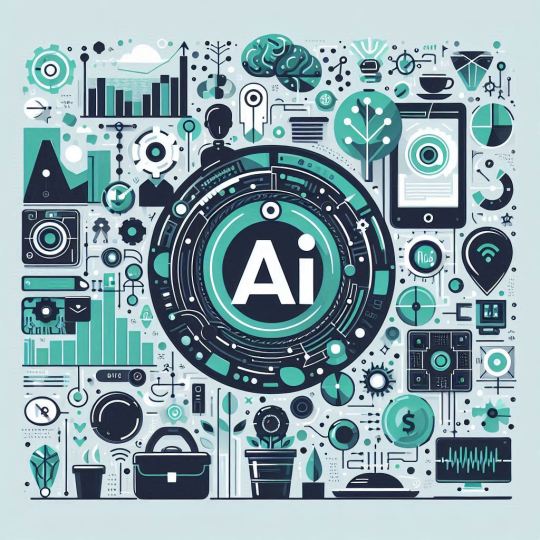
AI is revolutionizing business operations. Using AI-fuelled solutions means that you can automate processes, bring in positive customer experiences, and get insights. AI chatbots: AI can be utilized in the form of a conversational entity to support and perform backend operations, as well.
With a bit more specificity, say for example that an AI-powered recommendation engine recommends products to customers based on their browsing history and purchase patterns (as the use case of retail). This helps to increase the sales and improve the shopping experience.
3. Prioritize Cybersecurity
Cybersecurity is of utmost important as more and more business transitions towards digital platforms. Businesses need to part with a more substantial amount of money on advanced protective measures so that they can keep sensitive data private and continue earning consumer trust. Regular security audits and training of employees can reduce these risks.
Example: A financial services firm may implement multi-factor authentication (MFA) for all online transactions, regularly control access to Internet-facing administrative interfaces and service ports as well as the encryption protocols to secure client data from cyberattacks.
4. Optimizing Remote and Hybrid Working Models
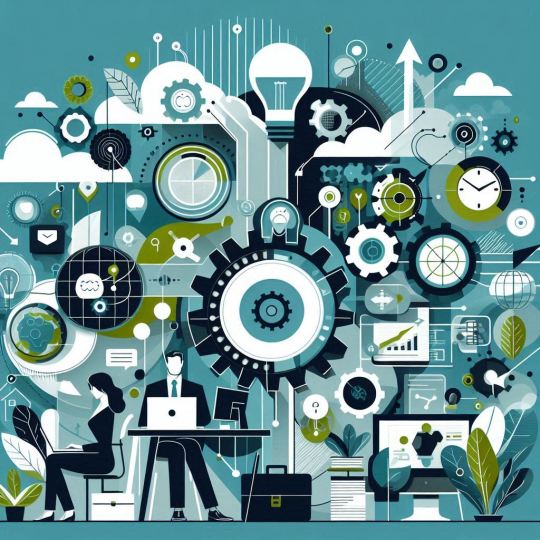
Remote / hybrid is the new normal Remote teams force companies to implement effective motivation and management strategies. Collaboration tools and a balanced virtual culture can improve productivity and employee satisfaction.
- Illustration: a Tech company using Asana / Trello etc. for pm to keep remote teams from falling out of balance. They can also organise weekly team-building activities to keep a strong team spirit.
5. Focus on Customer Experience
Retention and growth of the sales follow-through can be tied to high quality customer experiences. Harness data analytics to deepen customer insights and personalize product offers making your marketing campaigns personal: a customer support that is responsive enough can drive a great level of returning customers.
Example – For any e-commerce business, you can take user experience feedback tools to know about how your customers are getting along and make necessary changes. Custom email campaigns and loyalty programs can also be positively associated with customer satisfaction and retention.
6. Digitalization Investment
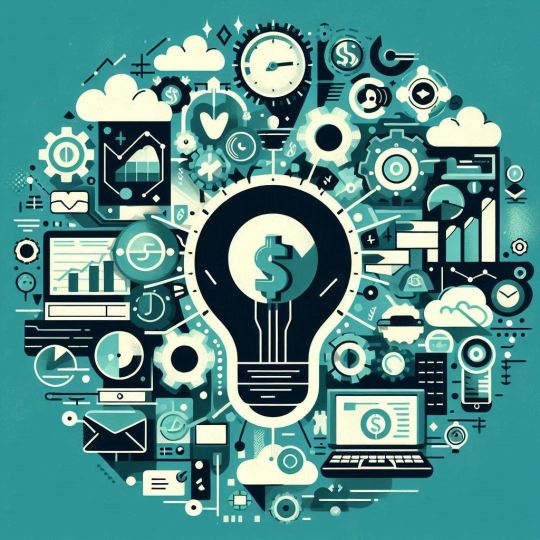
It is only the beginning of digital transformation which we all know, is key to global competitiveness. For streamlining, companies have to adopt the use advanced technologies such as Blockchain Technology and Internet of Things (IoT) in conjunction with cloud computing.
IoT example : real-time tracking and analytics to optimize supply chain management
7. Enhance Employee Skills
Develop Your Employees: Investing in employee development is key to succeeding as a business. The training is provided for the folks of various industries and so employees can increase their skills that are needed to work in a certain company. Employee performance can be enhanced by providing training programs in future technology skills and soft skills and job satisfaction.
Example: A marketing agency can host webinars or create courses to teach people the latest digital marketing trends and tools This can help to keep employees in the know which results in boosting their skills, making your campaigns successful.
8. Diversify Supply Chains
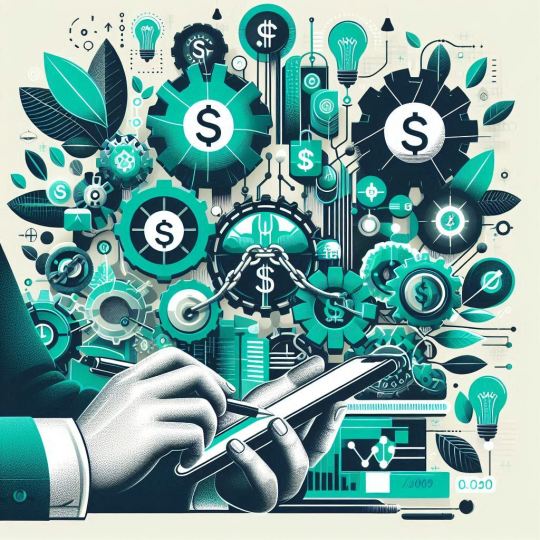
The ongoing pandemic has exposed the weaknesses of global supply chains. …diversify its supply base and promote the manufacturing of drugs in Nigeria to eliminate total dependence on a single source. In return, this approach increases resilience and reduces exposure to the risks of supply chain interruption.
- E.g., a consumer electronics company can source components from many suppliers in various regions. In so doing, this alleviates avoidable supply chain interruptions during times of political tensions or when disasters hit.
9. Make Decisions Based on Data
A business database is an asset for businesses. By implementing data, they allow you to make decisions based on the data that your analytics tools are providing. For example, sales analysis lets you track trends and better tailor your goods to the market.
Example: A retail chain can use data analytics to find out when a customer buys, and it change their purchasing policies. This can also reduce overstock and stockouts while overall, increasing efficiency.
10. Foster Innovation
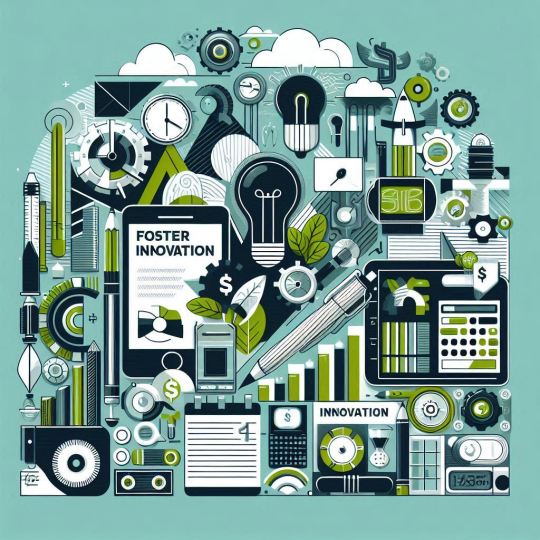
Business Growth Innovation is Key A culture of creativity and experimentation should be established in companies. Funding R&D and teaming with startups can open many doors to both solve problems creatively but also tap into new markets.
Example: A software development firm could create an innovation lab where team members are freed to work on speculative projects. Moreover, work with start-ups on new technologies and solutions.
By adopting these strategies, businesses can navigate the turbulence for 2024 and roll up market — progressive.AI with an evolving dynamic market, being ahead of trends and updated is most likely will help you thrive in the business landscape.
#ai#business#business strategy#business growth#startup#fintech#technology#tech#innovation#ai in business
2 notes
·
View notes
Text
How Can You Ensure Data Quality in Healthcare Analytics and Management?
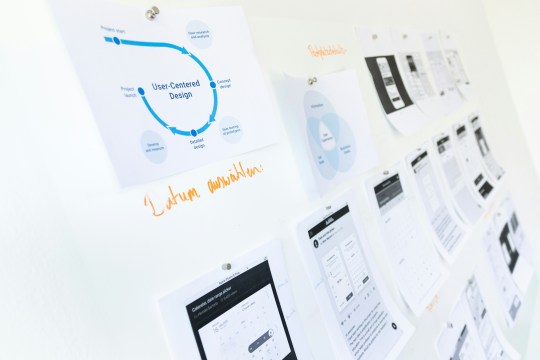
Healthcare facilities are responsible for the patient’s recovery. Pharmaceutical companies and medical equipment manufacturers also work toward alleviating physical pain, stress levels, and uncomfortable body movement issues. Still, healthcare analytics must be accurate for precise diagnosis and effective clinical prescriptions. This post will discuss data quality management in the healthcare industry.
What is Data Quality in Healthcare?
Healthcare data quality management includes technologies and statistical solutions to verify the reliability of acquired clinical intelligence. A data quality manager protects databases from digital corruption, cyberattacks, and inappropriate handling. So, medical professionals can get more realistic insights using data analytics solutions.
Laboratories have started emailing the test results to help doctors, patients, and their family members make important decisions without wasting time. Also, assistive technologies merge the benefits of the Internet of Things (IoT) and artificial intelligence (AI) to enhance living standards.
However, poor data quality threatens the usefulness of healthcare data management solutions.
For example, pharmaceutical companies and authorities must apply solutions that remove mathematical outliers to perform high-precision data analytics for clinical drug trials. Otherwise, harmful medicines will reach the pharmacist’s shelf, endangering many people.
How to Ensure Data Quality in the Healthcare Industry?
Data quality frameworks utilize different strategies to prevent processing issues or losing sensitive intelligence. If you want to develop such frameworks to improve medical intelligence and reporting, the following 7 methods can aid you in this endeavor.
Method #1| Use Data Profiling
A data profiling method involves estimating the relationship between the different records in a database to find gaps and devise a cleansing strategy. Data cleansing in healthcare data management solutions has the following objectives.
Determine whether the lab reports and prescriptions match the correct patient identifiers.
If inconsistent profile matching has occurred, fix it by contacting doctors and patients.
Analyze the data structures and authorization levels to evaluate how each employee is accountable for specific patient recovery outcomes.
Create a data governance framework to enforce access and data modification rights strictly.
Identify recurring data cleaning and preparation challenges.
Brainstorm ideas to minimize data collection issues that increase your data cleaning efforts.
Ensure consistency in report formatting and recovery measurement techniques to improve data quality in healthcare.
Data cleaning and profiling allow you to eliminate unnecessary and inaccurate entries from patient databases. Therefore, healthcare research institutes and commercial life science businesses can reduce processing errors when using data analytics solutions.
Method #2| Replace Empty Values
What is a null value? Null values mean the database has no data corresponding to a field in a record. Moreover, these missing values can skew the results obtained by data management solutions used in the healthcare industry.
Consider that a patient left a form field empty. If all the care and life science businesses use online data collection surveys, they can warn the patients about the empty values. This approach relies on the “prevention is better than cure” principle.
Still, many institutions, ranging from multispecialty hospitals to clinical device producers, record data offline. Later, the data entry officers transform the filled papers using scanners and OCR (optical character recognition).
Empty fields also appear in the database management system (DBMS), so the healthcare facilities must contact the patients or reporting doctors to retrieve the missing information. They use newly acquired data to replace the null values, making the analytics solutions operate seamlessly.
Method #3| Refresh Old Records
Your physical and psychological attributes change with age, environment, lifestyle, and family circumstances. So, what was true for an individual a few years ago is less likely to be relevant today. While preserving historical patient databases is vital, hospitals and pharma businesses must periodically update obsolete medical reports.
Each healthcare business maintains a professional network of consulting physicians, laboratories, chemists, dietitians, and counselors. These connections enable the treatment providers to strategically conduct regular tests to check how patients’ bodily functions change throughout the recovery.
Therefore, updating old records in a patient’s medical history becomes possible. Other variables like switching jobs or traveling habits also impact an individual’s metabolism and susceptibility to illnesses. So, you must also ask the patients to share the latest data on their changed lifestyles. Freshly obtained records increase the relevance of healthcare data management solutions.
Method #4| Standardize Documentation
Standardization compels all professionals to collect, store, visualize, and communicate data or analytics activities using unified reporting solutions. Furthermore, standardized reports are integral to improving data governance compliance in the healthcare industry.
Consider the following principles when promoting a documentation protocol to make all reports more consistent and easily traceable.
A brand’s visual identities, like logos and colors, must not interfere with clinical data presentation.
Observed readings must go in the designated fields.
Both the offline and online document formats must be identical.
Stakeholders must permanently preserve an archived copy of patient databases with version control as they edit and delete values from the records.
All medical reports must arrange the data and insights to prevent ambiguity and misinterpretation.
Pharma companies, clinics, and FDA (food and drug administration) benefit from reporting standards. After all, corresponding protocols encourage responsible attitudes that help data analytics solutions avoid processing problems.
Method #5| Merge Duplicate Report Instances
A report instance is like a screenshot that helps you save the output of visualization tools related to a business query at a specified time interval. However, duplicate reporting instances are a significant quality assurance challenge in healthcare data management solutions.
For example, more than two nurses and one doctor will interact with the same patients. Besides, patients might consult different doctors and get two or more treatments for distinct illnesses. Such situations result in multiple versions of a patient’s clinical history.
Data analytics solutions can process the data collected by different healthcare facilities to solve the issue of duplicate report instances in the patients’ databases. They facilitate merging overlapping records and matching each patient with a universally valid clinical history profile.
Such a strategy also assists clinicians in monitoring how other healthcare professionals prescribe medicine to a patient. Therefore, they can prevent double dosage complications arising from a patient consuming similar medicines while undergoing more than one treatment regime.
Method #6| Audit the DBMS and Reporting Modules
Chemical laboratories revise their reporting practices when newly purchased testing equipment offers additional features. Likewise, DBMS solutions optimized for healthcare data management must receive regular updates.
Auditing the present status of reporting practices will give you insights into efficient and inefficient activities. Remember, there is always a better way to collect and record data. Monitor the trends in database technologies to ensure continuous enhancements in healthcare data quality.
Simultaneously, you want to assess the stability of the IT systems because unreliable infrastructure can adversely affect the decision-making associated with patient diagnosis. You can start by asking the following questions.
Questions to Ask When Assessing Data Quality in Healthcare Analytics Solutions
Can all doctors, nurses, agents, insurance representatives, patients, and each patient’s family members access the required data without problems?
How often do the servers and internet connectivity stop functioning correctly?
Are there sufficient backup tools to restore the system if something goes wrong?
Do hospitals, research facilities, and pharmaceutical companies employ end-to-end encryption (E2EE) across all electronic communications?
Are there new technologies facilitating accelerated report creation?
Will the patient databases be vulnerable to cyberattacks and manipulation?
Are the clinical history records sufficient for a robust diagnosis?
Can the patients collect the documents required to claim healthcare insurance benefits without encountering uncomfortable experiences?
Is the presently implemented authorization framework sufficient to ensure data governance in healthcare?
Has the FDA approved any of your prescribed medications?
Method #7| Conduct Skill Development Sessions for the Employees
Healthcare data management solutions rely on advanced technologies, and some employees need more guidance to use them effectively. Pharma companies are aware of this as well, because maintaining and modifying the chemical reactions involved in drug manufacturing will necessitate specialized knowledge.
Different training programs can assist the nursing staff and healthcare practitioners in developing the skills necessary to handle advanced data analytics solutions. Moreover, some consulting firms might offer simplified educational initiatives to help hospitals and nursing homes increase the skill levels of employees.
Cooperation between employees, leadership, and public authorities is indispensable to ensure data quality in the healthcare and life science industries. Otherwise, a lack of coordination hinders the modernization trends in the respective sectors.
Conclusion
Healthcare analytics depends on many techniques to improve data quality. For example, cleaning datasets to eliminate obsolete records, null values, or duplicate report instances remains essential, and multispecialty hospitals agree with this concept.
Therefore, medical professionals invest heavily in standardized documents and employee education to enhance data governance. Also, you want to prevent cyberattacks and data corruption. Consider consulting reputable firms to audit your data operations and make clinical trials more reliable.
SG Analytics is a leader in healthcare data management solutions, delivering scalable insight discovery capabilities for adverse event monitoring and medical intelligence. Contact us today if you want healthcare market research and patent tracking assistance.
3 notes
·
View notes
Text
Indonesia Smart Cities Market Outlook for Forecast Period (2023 to 2030)
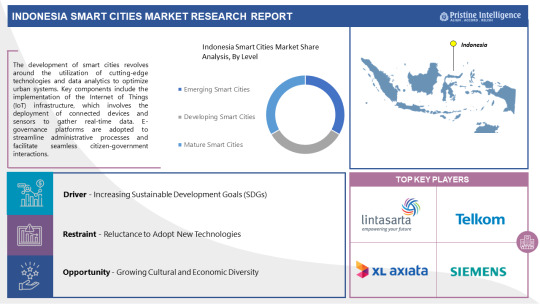
Indonesia's Smart Cities are Expected to Grow at a Significant Growth Rate, and the Forecast Period is 2023-2030, Considering the Base Year as 2022.
The development of smart cities revolves around the utilization of cutting-edge technologies and data analytics to optimize urban systems. Key components include the implementation of the Internet of Things (IoT) infrastructure, which involves the deployment of connected devices and sensors to gather real-time data.
This data is then analyzed to provide valuable insights that inform decision-making by city officials. Smart mobility solutions play a vital role in improving transportation networks, easing traffic congestion, and promoting eco-friendly transit options. E-governance platforms are adopted to streamline administrative processes and facilitate seamless citizen-government interactions.
Sustainability initiatives are emphasized, including energy-efficient buildings, renewable energy integration, waste management, and environmental conservation. Moreover, citizen engagement is fostered through digital platforms, allowing residents to actively participate in shaping urban policies and providing feedback to authorities.
One of the notable examples of smart city development in Indonesia is the "Jakarta Smart City" initiative. As the capital and most populous city in the country, Jakarta faces numerous urban challenges such as traffic congestion, waste management, and environmental pollution. To tackle these issues, the Jakarta Smart City program leverages technology and data to improve various urban services. Real-time traffic data is collected through IoT sensors to optimize transportation routes and manage traffic flow efficiently.
Waste management is enhanced by implementing smart waste bins that alert authorities when they need to be emptied, reducing unnecessary waste collection trips. Moreover, the program employs digital platforms and mobile applications to engage citizens, allowing them to access information about city services, report issues, and participate in decision-making processes. These efforts have aimed to transform Jakarta into a more sustainable, efficient, and citizen-centric smart city.
Get Full PDF Sample Copy of Report: (Including Full TOC, List of Tables & Figures, Chart) @
The latest research on the Indonesia Smart Cities market provides a comprehensive overview of the market for the years 2023 to 2030. It gives a comprehensive picture of the global Indonesia Smart Cities industry, considering all significant industry trends, market dynamics, competitive landscape, and market analysis tools such as Porter's five forces analysis, Industry Value chain analysis, and PESTEL analysis of the Indonesia Smart Cities market. Moreover, the report includes significant chapters such as Patent Analysis, Regulatory Framework, Technology Roadmap, BCG Matrix, Heat Map Analysis, Price Trend Analysis, and Investment Analysis which help to understand the market direction and movement in the current and upcoming years. The report is designed to help readers find information and make decisions that will help them grow their businesses. The study is written with a specific goal in mind: to give business insights and consultancy to help customers make smart business decisions and achieve long-term success in their particular market areas.
Market Driver:
One of the key drivers propelling the growth of the Indonesia Smart Cities market is the government's strong commitment to urban development and digital transformation. Initiatives such as the 100 Smart Cities Movement and various smart city pilot projects across the archipelago are driving the integration of smart technologies. The government's emphasis on creating efficient and sustainable urban ecosystems through the adoption of smart solutions is encouraging both public and private sector investments. As a result, there is a growing demand for intelligent infrastructure, smart transportation systems, and data-driven governance to address the challenges of rapid urbanization.
Market Opportunity:
An exciting opportunity within the Indonesia Smart Cities market lies in the development of smart transportation systems. As urbanization accelerates, traffic congestion and transportation inefficiencies pose significant challenges. Implementing smart transportation solutions, including intelligent traffic management, integrated public transportation systems, and the adoption of electric vehicles, can greatly enhance urban mobility. The integration of these technologies not only addresses current challenges but also creates a foundation for sustainable and future-ready urban transportation. Entrepreneurs and businesses investing in smart transportation solutions stand to benefit from a burgeoning market with the potential to transform how people and goods move within cities.
Leading players involved in the Indonesia Smart Cities Market include:
PT Aplikanusa Lintasarta (Indonesia), PT Telkom (Telekomunikasi Indonesia Tbk) (Indonesia), PT XL Axiata Tbk (Indonesia), Siemens (Germany), Schneider Electric (France), Philips (Netherlands), Huawei Tech Investment (China), PT Waskita Karya (Indonesia), PT KAI Commuter Jabodetabek (Indonesia), PT Indosat Ooredoo (Indonesia), PT Link Net Tbk (First Media) (Indonesia), PT Surya Semesta Internusa (Indonesia), Ace Hardware Tbk (US), PT Sinar Mas Land (Indonesia), PT Cipta Kridatama (Indonesia), SICE (Spain), PT Cyberindo Aditama (CBN) (Indonesia), PT Sampoerna Telekomunikasi Indonesia (STI) (Indonesia), PT Pelayaran Tempuran Emas Tbk (TEMAS) (Indonesia), PT Bangun Cipta Kontraktor (BCK) (Indonesia), and Other Major Players.
If You Have Any Query Indonesia Smart Cities Market Report, Visit:
Segmentation of Indonesia Smart Cities Market:
By Solution and Service
Smart Mobility Management
Smart Public Safety
Smart Healthcare
Smart Building
Smart Utilities
Others
By Component
Hardware
Software
Service
By Level
Emerging Smart Cities
Developing Smart Cities
Mature Smart Cities
By End-user
Government & Municipalities
Transportation & Logistics
Energy & Utilities
Healthcare
Education
Others
Owning our reports (For More, Buy Our Report) will help you solve the following issues:
Uncertainty about the future?
Our research and insights help our clients to foresee upcoming revenue pockets and growth areas. This helps our clients to invest or divest their resources.
Understanding market sentiments?
It is imperative to have a fair understanding of market sentiments for a strategy. Our insights furnish you with a hawk-eye view on market sentiment. We keep this observation by engaging with Key Opinion Leaders of a value chain of each industry we track.
Understanding the most reliable investment centers?
Our research ranks investment centers of the market by considering their returns, future demands, and profit margins. Our clients can focus on the most prominent investment centers by procuring our market research.
Evaluating potential business partners?
Our research and insights help our clients in identifying compatible business partners.
Acquire This Reports: -
About Us:
We are technocratic market research and consulting company that provides comprehensive and data-driven market insights. We hold the expertise in demand analysis and estimation of multidomain industries with encyclopedic competitive and landscape analysis. Also, our in-depth macro-economic analysis gives a bird's eye view of a market to our esteemed client. Our team at Pristine Intelligence focuses on result-oriented methodologies which are based on historic and present data to produce authentic foretelling about the industry. Pristine Intelligence's extensive studies help our clients to make righteous decisions that make a positive impact on their business. Our customer-oriented business model firmly follows satisfactory service through which our brand name is recognized in the market.
Contact Us:
Office No 101, Saudamini Commercial Complex,
Right Bhusari Colony,
Kothrud, Pune,
Maharashtra, India - 411038 (+1) 773 382 1049 +91 - 81800 - 96367
Email: [email protected]
#Indonesia Smart Cities#Indonesia Smart Cities Market#Indonesia Smart Cities Market Size#Indonesia Smart Cities Market Share#Indonesia Smart Cities Market Growth#Indonesia Smart Cities Market Trend#Indonesia Smart Cities Market segment#Indonesia Smart Cities Market Opportunity#Indonesia Smart Cities Market Analysis 2023#US Indonesia Smart Cities Market#Indonesia Smart Cities Market Forecast#Indonesia Smart Cities Industry#Indonesia Smart Cities Industry Size#china Indonesia Smart Cities Market#UK Indonesia Smart Cities Market
2 notes
·
View notes
Text
SAP's Role in Building Smart Cities for a Brighter Tomorrow
The globe is quickly urbanizing, and cities face the task of effectively managing resources and services while enhancing citizens' quality of life. Smart cities are developing as the solution to these urban difficulties, fueled by technology and data-driven solutions. In this blog, we'll look at how SAP, a global leader in enterprise software, is transforming cities into smart, sustainable, and networked centres of innovation and advancement.
Deciphering Smart Cities
Before we get into SAP's smart solutions for smart cities contributions, we need define what we mean by "smart cities." These cities use digital technology, data analytics, IoT (Internet of Things), AI (Artificial Intelligence), and cloud computing to improve transportation, energy use, waste management, public safety, and other areas of city life. The main objective is to build urban settings that are responsive, adaptive, and environmentally friendly.
SAP's Impact on Smart Cities
SAP's extensive experience in enterprise software and data management positions it as a key player in the smart city revolution. Here's a closer look at how SAP smart solutions for smart cities is shaping the future of cities:
Data Integration: Smart cities generate vast amounts of data from diverse sources, including sensors, mobile apps, and government systems. SAP's data integration and analytics tools empower cities to efficiently collect, process, and analyze this data in real time. Such smart solutions for smart cities insights prove invaluable for informed decision-making on resource allocation, infrastructure maintenance, and service optimization.
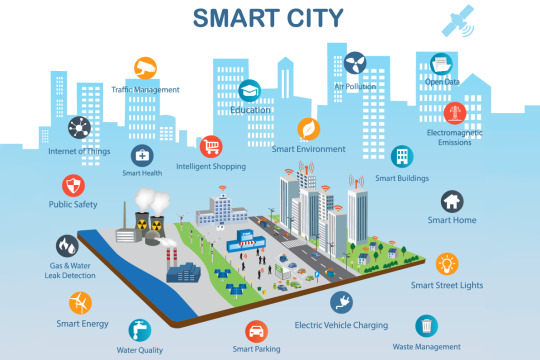
IoT Empowerment: IoT forms the bedrock of smart cities, and SAP's IoT solutions facilitate the seamless connection and management of countless devices and sensors. From smart traffic lights to waste bins, this connectivity allows real-time monitoring and control, enhancing everything from traffic management to environmental sustainability.
Predictive Analytics: SAP's predictive analytics tools enable cities to foresee trends and challenges. For instance, predictive maintenance identifies when critical infrastructure, like bridges or water pipes, may need attention before a major issue arises, saving both time and resources.
Citizen Engagement: Smart cities thrive on citizen involvement in decision-making. SAP provides platforms for citizen engagement, such as mobile apps and online portals, where residents can report issues, take part in surveys, and access information on city services and projects.
Energy Efficiency: Energy management is a top priority for smart cities, and SAP's smart solutions for smart cities help cities monitor and optimize energy consumption in public buildings, street lighting, and other municipal facilities. This smart solutions for smart cities reduces costs and environmental impact.
Conclusion
SAP's essential role in smart city development is assisting cities throughout the world in addressing the complex issues of rising urbanization and resource management. Cities are becoming more efficient, sustainable, and responsive to their inhabitants' demands by leveraging SAP's expertise in data management, IoT, and analytics. The influence of SAP smart business on the future of smart cities is poised to grow as technology progresses, providing more livable, connected, and resilient urban settings for future generations.
3 notes
·
View notes
Text
Driving the Green Revolution: Efficiently Mitigating Carbon Emissions with n0c tech
Introduction: In the face of the pressing global climate crisis, mitigating carbon emissions has become an urgent priority. To tackle this challenge efficiently, forward-thinking companies like n0c Tech are leading the charge with innovative solutions that not only contribute to a sustainable future but also do so at a fraction of the cost compared to traditional methods. In this blog post, we delve into the crucial issue of carbon emissions reduction and explore how n0c Tech is making a significant impact while driving costs down by an impressive 85% compared to conventional approaches.
1. The Urgent Need for Carbon Emissions Mitigation As carbon emissions continue to rise, the adverse effects on our environment become increasingly evident. Climate change poses serious threats, such as rising sea levels, extreme weather events, and loss of biodiversity. To address this crisis, nations and industries must work together to achieve carbon neutrality and limit global warming. Sustainable technology and innovative approaches are key to achieving these ambitious goals.
2. The Power of n0c Tech's Innovative Solutions n0c Tech has emerged as a pioneering force in the green technology sector, offering revolutionary solutions that effectively mitigate carbon emissions. At the core of their success lies their commitment to cutting-edge research and development, resulting in high-performance, eco-friendly products.
3. Energy-Efficient Hardware One of the key ways n0c Tech addresses carbon emissions is through energy-efficient hardware solutions. Their state-of-the-art devices are designed with a focus on optimizing power consumption without compromising performance. By reducing the energy footprint, these products contribute to lower greenhouse gas emissions during usage, making them an excellent choice for environmentally-conscious consumers.
4. Sustainable Manufacturing Practices In addition to creating energy-efficient products, n0c Tech is also revolutionizing manufacturing practices. Their commitment to sustainability extends throughout the entire production process. From responsibly sourcing materials to implementing waste reduction strategies, n0c Tech's manufacturing operations minimize their ecological impact significantly.
5. Green Data Centers Data centers are notorious for their substantial energy consumption and carbon emissions. However, n0c Tech has revolutionized this sector by introducing green data centers powered by renewable energy sources. By optimizing cooling systems and adopting energy-efficient technologies, these data centers set new standards for reducing carbon emissions within the industry.
6. Leveraging AI and IoT for Carbon Management n0c Tech harnesses the power of artificial intelligence (AI) and the Internet of Things (IoT) to implement advanced carbon management solutions. AI-powered algorithms analyze data in real-time, identifying areas of high emissions and optimizing energy usage. This data-driven approach helps businesses and industries make informed decisions to reduce their carbon footprint proactively.
7. Cost Efficiency: Driving Change at an Affordable Price One of the most remarkable aspects of n0c Tech's green revolution is their ability to deliver environmentally-friendly solutions at an astonishing 85% reduced cost compared to traditional companies. By offering cost-efficient alternatives, they encourage widespread adoption of sustainable practices, making a significant impact on carbon emissions worldwide.
Conclusion: As the world faces the critical challenge of mitigating carbon emissions, n0c Tech emerges as a trailblazer in driving the green revolution. Through energy-efficient hardware, sustainable manufacturing practices, green data centers, and leveraging AI and IoT for carbon management, n0c Tech showcases a comprehensive approach to sustainability. Furthermore, their remarkable ability to deliver these solutions at an 85% reduced cost compared to traditional companies makes their contributions even more impactful. By championing affordable and efficient carbon emissions mitigation, n0c Tech inspires a brighter and greener future for generations to come.
Visit n0c Tech's website to learn more about their innovative solutions driving sustainability and carbon emissions reduction. Together, we can forge a path towards a cleaner, greener, and more sustainable world.
4 notes
·
View notes
Text
Cyber Security Playbook launched in the UK

The Department for Science, Innovation, and Technology (DSIT) has this week launched the alpha Secure Connected Places Playbook for local authorities, a new resource offering practical and accessible support to improve the cyber security of their connected places, or ‘smart cities’, across the UK. Connected places are communities that integrate information and communication technologies, as well as Internet of Things (IoT) devices, to collect and analyse data to deliver new services to the community and enhance the quality of living for citizens. These improvements feature across a wide array of areas, including key public services such as transportation, utilities and wider infrastructure. Given the large amount data they collect, the interconnected nature of their systems, and the potential impact on local infrastructure, connected places can be attractive targets to hostile actors. This Playbook will help local authorities set a foundation to protect themselves against would-be cyber threats. Created in collaboration with a group of local authorities, the alpha Playbook provides practical cyber security support as communities increase their use of innovative solutions, such as automated traffic and waste management systems, and smart environmental monitoring. Minister for Cyber, AI, and Intellectual Property, Viscount Camrose, said: Connected places offer enormous benefits for the entire country, not just through improved public services for our communities, but through new innovations which will unlock better-paid jobs and grow our economy. We are already world leaders in cyber security, as demonstrated by through pioneering measures such as the Product Security Regime. It’s vital that this expertise carries over to the development of our connected places. This Playbook will help do exactly that – offering practical and accessible support to local authorities as we work collaboratively to grow secure and sustainable connected places across the UK. Designed to be accessible for those without a technical background, the alpha Playbook will help local authority teams who are working on connected places projects to get their cyber security foundations right and set a strong security culture in the process. The alpha Playbook addresses several key cyber security challenges which local authorities face in the deployment of connected places technologies, including a resources on cyber security governance, risk management, procurement and supply chain security, as well as guidance on how to conduct threat analysis. A diverse group of local authorities has contributed to its creation, ensuring it can address the diverse practical needs of communities across the country. The contributing authorities were: - Bradford Metropolitan City Council - Westminster City Council - Dorset Council - Merthyr Tydfil County Borough Council - The South London Partnership - Perth and Kinross Council DSIT is committed to continuing its work with local authorities to ensure that the alpha Playbook continues to work for their practical needs. Today, DSIT is inviting applications from local authorities to participate in the next phase of the project, beta testing the alpha Playbook. This will involve an expanded cohort of 12 local authorities who will receive dedicated cyber security support to apply and refine the advice in the alpha Playbook. This will inform a beta version of the Playbook targeted for publication next year. Feeding into the government’s National Cyber Strategy and complementing existing guidance published by the National Cyber Security Centre, the playbook helps cement the UK’s place as a global leader in secure and sustainable connected places. Read the full article
2 notes
·
View notes
Text
The Role of IoT in Building Smart Cities
In recent years, governments around the world have been investing in urban planning to create smarter and more efficient cities. With advancements in technology, specifically the Internet of Things (IoT), governments now have a sophisticated toolkit to build better cities. IoT has not only changed how residents communicate and plan their activities but also revolutionized urban development. In this article, we will explore the concept of smart cities and the vital role that IoT plays in their development.
Defining a Smart City:
A smart city is an urban area that utilizes technology to enhance the living and working experience of its residents. It focuses on sustainability, connectivity, data-driven planning, and smart utility systems. Smart cities can encompass a range of implementations, such as robust public transportation systems, sensor-enabled traffic signals, and IoT-powered utility meters. The goal is to create better living conditions for residents and improve overall efficiency.
Applications of IoT in Smart Cities:
Efficient Energy Management: IoT systems enable smart cities to better manage their energy requirements by providing real-time insights into energy consumption. Smart grids can distribute electricity efficiently, while IoT-powered utility meters streamline billing.
Smooth and Robust Transportation Systems: IoT can streamline transportation systems by providing detailed sensor data, facilitating better scheduling and reducing congestion. It can also automate toll collection, improving overall efficiency.
Smart Waste Management: IoT systems help cities create better schedules for waste collection, ensure the proper functioning of waste disposal equipment, and optimize resource usage.
Access Management: By combining IoT-based access management and security systems, smart cities can enhance safety and security while reducing resource requirements.
Environment Monitoring Systems: IoT sensors can track pollutants and harmful substances in the environment, enabling cities to implement pollution control plans and systems. They can also control indoor air purifiers based on real-time data.
Benefits of IoT in Smart Cities:
Leveraging IoT in smart cities offers several advantages for city officials and residents alike. IoT sensors provide granular data and insights into city operations, enabling officials to make informed decisions for improvement. Data-driven decision-making and planning optimize resource allocation and enhance overall efficiency. For residents, IoT-based solutions improve their day-to-day experiences, such as finding parking spots quickly or being informed about real-time air quality.
The Future of IoT and Smart Cities:
The potential of IoT in smart cities is vast and constantly evolving. Predictive maintenance using IoT sensors can help identify infrastructure issues before they become major problems, ensuring timely intervention. Advanced IoT systems can optimize energy distribution, integrating renewable sources for a more sustainable energy grid. Furthermore, IoT can personalize the city experience for residents, adapting traffic lights and building environments to their preferences.
Conclusion:
IoT is playing a pivotal role in the development of smart cities worldwide. By leveraging IoT technologies, governments can enhance operational visibility, improve decision-making processes, and provide an elevated resident experience. The future of IoT and smart cities holds exciting possibilities, including predictive maintenance, smart grids, and personalized city experiences. Bridgera, a leading innovator in developing custom IoT solutions, is empowering city officials and residents alike to embark on their smart city journey. Contact Bridgera today to explore the transformative potential of IoT remote monitoring in building smart cities.
0 notes
Photo
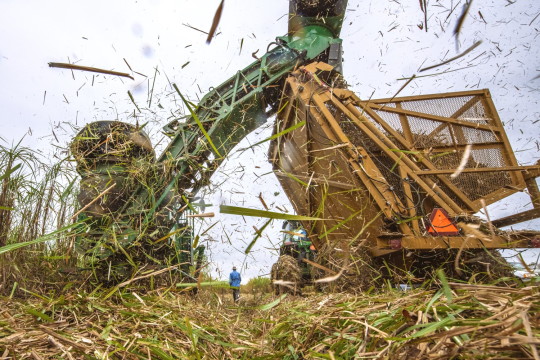
Illustration Photo: Sugarcane is one of the most efficient producers of biomass of all plant species and can be used as a renewable fuel. The new variety Ho 06-9002 has a high fiber content, excellent regrowth ability over 4 to 5 years, is cold-tolerant, has a high stalk population, and produces excellent biomass yields. (credits: USDA Media by Lance Cheung / Public domain)
Repsol Entrepreneurs Fund for Startups in the Energy Transition
At the Repsol Foundation, we have been supporting entrepreneurship and entrepreneurs for more than 10 years through Fondo de Emprendedores, our accelerator for start-ups that provide technological solutions to meet the challenges of the Energy Transition. This is a perfect program for start-ups in the testing phase with real customers, or that will reach this phase in 1–2 years.
This program aims to accelerate startups working in any of the following:
SCOPE 1: LOW-CARBON ENERGY TECHNOLOGIES AND CIRCULAR ECONOMY 1. Recycling and treatment technologies: conversion of biomass, new processes for converting waste into chemical products 2. Biogas production, upgrading, transport and end use technologies 3. Low environmental impact H2 renewable solutions for production, blending, transport and storage 4. Advanced biofuel production and conversion technologies (liquefaction or de novo, gasification) and synthetic fuels for road, maritime and aviation transport 5. Processing of chemicals and other organic materials for circular economy 6. Low-carbon lubricants for industrial and automotive applications 7. CO2 Capture, Use and/or Storage Technologies. CO2 Direct Air Capture: new absorbent materials and efficient process design 8. COX, H2 conversion processes to Hydrocarbons 9. Low carbon technologies for Oil & Gas operations, including energy efficiency, GHG direct emissions (scopes 1 and 2), Methane emissions, CCS or Geothermal. 10. Other technologies related to this scope’s heading
SCOPE 2: BIOTECHNOLOGY AND NANOTECHNOLOGY FOR SUSTAINABLE SOLUTIONS 1. Bio conversion of organic material to chemicals. Biorefinery, biofactory 2. Protein engineering, development of biocatalysts and enzymes 3. Gene editing technologies and applications in energy and materials 4. Plastic biodegradation technologies 5. Biosensors design, production and end use. 6. Anti-corrosive, anti-bacterial, thermal nanocoating for pipelines and infrastructures 7. Organic and inorganic membrane technologies, including new materials 8. Improvement of the properties of fuels, lubricants and chemicals 9. Other technologies related to this scope’s heading
SCOPE 3: PRODUCTS AND SERVICES BASED ON ENERGY MANAGEMENT AND RENEWABLES 1. Intelligent energy management systems 2. New batteries and fuel cells technologies 3. Distributed energy solutions 4. Energy conversion and storage systems 5. Advanced mobility solutions 6. Renewable energy generation, maintenance and control and commercialization. 7. Other technologies related to this scope’s heading
SCOPE 4: DIGITAL TECHNOLOGIES FOR THE ENERGY SECTOR 1. Artificial intelligence applied to process optimization and energy efficiency. 2. Digital twins and intelligent interfaces for process control 3. Digital technologies for predictive and prescriptive maintenance 4. Smart trading for the energy marketplace 5. Computational chemistry tools for energy applications 6. Remote sensing, IoT and robotic solutions for industrial assets and environment 7. Quantum computing applications in energy sector 8. Other technologies related to this scope’s heading SCOPE 5: NATURAL SOLUTIONS FOR CARBON FOOTPRINT REDUCTION 1. Reforestation and afforestation technologies for resilient CO2 absorption sinks 2. Advanced monitoring, reporting and verification technologies in CO2 absorption 3. Digital technologies applied to carbon markets value chain 4. Technologies for ESG (Environmental, Social and Governance) project certification 5. Other technologies related to this scope’s heading
Startups admitted to the Program will receive during the acceleration period a contribution of FIVE THOUSAND EUROS (€ 5,000) per month as ordinary funds. Additionally, admitted Startups may request up to a maximum of FORTY THOUSAND EUROS (€ 40,000) per year as extraordinary funds for strategic expenses to achieve the milestones of the Work Plan (as defined in section 4.4), mainly to complete the pilot test. The disbursement of this additional contribution will be subject to the exclusive decision of Fundación Repsol.
Application Deadline: March 10, 2023
Check more https://adalidda.com/posts/c4qmPwNwToZAAbf2L/repsol-entrepreneurs-fund-for-startups-in-the-energy/call
2 notes
·
View notes
Text
Green Building Solutions in Industrial Construction.
Industrial property developers are rapidly adopting green building solutions to address the growing demand for environmentally sustainable and energy-efficient industrial spaces. This approach not only helps mitigate the environmental impact of large-scale construction projects but also enhances operational efficiency and reduces long-term costs for businesses.

The Rise of Green Building Practices
Green building solutions focus on integrating renewable energy systems, such as solar panels, with energy-efficient lighting and HVAC systems to minimize power consumption. Additionally, these projects incorporate water-saving technologies like rainwater harvesting and wastewater recycling to promote responsible resource management. The use of environmentally friendly building materials, such as recycled steel and low-VOC (volatile organic compound) products, further reduces the carbon footprint. By utilizing these innovative strategies, industrial construction is becoming more aligned with global sustainability goals.
Role of Pre-Engineered Steel Buildings
A significant contributor to this trend is the implementation of pre-engineered steel buildings (PEBs). These structures are not only cost-effective but also highly durable and sustainable. PEBs are designed to produce minimal construction waste, streamline project timelines, and offer better thermal efficiency compared to traditional construction methods. These benefits make them an ideal choice for modern industrial projects looking to achieve green certification.
PEBs also contribute to reducing greenhouse gas emissions through optimized designs that minimize material usage without compromising structural integrity. Their modular nature allows for easy expansion and reconfiguration, making them adaptable to future business needs. By integrating advanced insulation materials and energy-efficient systems, PEBs significantly enhance the overall sustainability of industrial facilities.
Key Components of Green Industrial Construction
Energy Efficiency: Incorporating energy-efficient technologies such as LED lighting, motion sensors, and energy management systems helps reduce energy consumption.
Water Management: Advanced systems like drip irrigation, greywater recycling, and efficient plumbing fixtures ensure optimal water usage.
Waste Reduction: On-site waste management plans and the use of recyclable materials reduce landfill contributions.
Eco-Friendly Materials: Utilizing materials such as bamboo, recycled concrete, and certified wood lowers the environmental impact.
Smart Technologies: IoT-enabled systems for monitoring energy use, air quality, and equipment performance improve operational efficiency.
Benefits of Green Building Solutions
The adoption of green building practices offers numerous advantages:
Cost Savings: Lower operational costs due to reduced energy and water consumption.
Regulatory Compliance: Meeting local and international sustainability standards and certifications.
Enhanced Reputation: Companies embracing green construction are perceived as environmentally responsible, attracting investors and clients.
Employee Well-being: Improved indoor air quality and natural lighting create healthier work environments.
Industry Innovations
Innovations in green industrial construction are continuously shaping the future. Green roofing systems, which include vegetation layers, help regulate building temperatures and reduce urban heat island effects. Vertical gardens within industrial spaces contribute to better air quality and aesthetic appeal. Smart building technologies, such as automated energy systems and AI-driven predictive maintenance, optimize resource utilization and reduce waste.
Challenges and Solutions
Despite its benefits, green industrial construction faces challenges, such as higher initial costs and limited availability of sustainable materials. However, incentives like government subsidies, tax benefits, and green bonds make these projects more financially viable. Collaboration between developers, architects, and environmental experts is crucial to overcoming these hurdles and creating scalable solutions.
Leading the Way
Several industrial property developers have taken bold steps to adopt green practices, setting new benchmarks in the industry. Their efforts include implementing renewable energy solutions, designing energy-efficient layouts, and prioritizing eco-friendly materials. These initiatives not only benefit the environment but also ensure long-term profitability and resilience in a competitive market.
In conclusion, the drive towards sustainability is reshaping the industrial construction landscape, with companies striving to establish themselves as the best factory construction company in India by embracing cutting-edge green building practices. By focusing on innovation and environmental stewardship, they set new standards for the future of industrial infrastructure.
#Industrial Property Developer#Pre-engineered steel buildings#Best Factory Construction company in India
0 notes
Text
What are asset management services and operating standards?
Asset management services are indispensable in the current fast-paced commercial and industrial environments to guarantee that tangible assets generate the maximum prospective value throughout their lifespans. The strategic and logical administration of assets is one of the components of these services. Everything from machinery and equipment to structures and infrastructure is included in these assets. It is imperative to comply with operating standards in this sector of the economy, as they ensure consistent performance, safety, and sustainability.
Energy Plus Technical Services W.L.L. is the premier provider of asset management services in Qatar. It is also a company that sets standards for dependability and efficiency, and it serves as a center for innovation and contemporary infrastructure.
Asset Management Services: What Are They?
The term "asset management" denotes a collection of procedures that are designed to optimize the value, performance, and longevity of tangible assets. It comprises the subsequent items:
Asset Acquisition and Strategic Planning
When selecting and purchasing assets, operational requirements and long-term objectives are assessed. The acquisition of assets is conducted in a strategic manner.
Maintenance and Improvement The most effective way to ensure that assets function is to implement performance optimization, predictive maintenance, and regular service.
The objective of lifecycle management is to reduce costs and delays by monitoring the entire lifespan of an asset, from its procurement to its disposal.
It is crucial to identify and mitigate the risks associated with compliance, safety, and asset performance during the risk management process.
Examples of data-driven decision-making include the monitoring of asset performance and the guidance of investment decisions through the use of analytics and technologies associated with the Internet of Things (IoT).
Asset Management Standard Operating Procedures
The framework of asset management services and the methods that yield the most favorable outcomes are determined by operating standards. These regulations guarantee that the operations are executed in a manner that is both consistent and conforming.
The following are critical prerequisites:
The International Organization for Standardization (ISO) 55001 is a widely recognized asset management system benchmark that prioritizes continuous improvement, risk minimization, and value production.
regulations for The objective of Safety and Compliance is to guarantee environmental responsibility and worker safety by complying with industry-specific regulations.
Environmental Stewardship Guidelines are being implemented to support environmental objectives, including the reduction of waste and the enhancement of energy efficiency. Standards that are unique to the industry Standards that are developed to meet the unique operational requirements of businesses, including oil and gas companies, construction companies, and manufacturing companies.
Energy Plus is a prominent provider of asset management services in Qatar.
Technical Services for Energy Plus W.L.L. has become the most reputable entity in Qatar among asset management service providers. This is the reason why:
Energy Plus offers a comprehensive array of asset management services, including the acquisition and maintenance of equipment, as well as the planning of lifecycles and the improvement of performance.
The Professionals' Group The administration of complex assets across a variety of industries is carried out by their highly skilled personnel, who bring an unrivaled level of experience to ensure that operations run efficiently and there is minimal downtime.
Technology that is preferable Energy Plus provides real-time monitoring and predictive maintenance services to improve decision-making capabilities by leveraging state-of-the-art technologies and solutions that are founded on the Internet of Things.
Energy Plus is dedicated to delivering exceptional service that is customized to meet the unique needs of its customers. By conforming its business practices to international standards, including ISO 55001, this is achieved.
a methodology that prioritizes the user The company has become a dependable business associate for firms located throughout Qatar as a result of its commitment to comprehending and fulfilling the needs of its customers.
An Examination of the Significance of Asset Management
In a market as competitive and dynamic as Qatar's, an effective asset management system guarantees the following:
Cost savings will be achieved through operational enhancements and decreased disruptions.
The standards have been enhanced in terms of safety and compliance.
The efficacy and longevity of assets have been enhanced.
The adherence to the company's objectives and the promotion of sustainability.
Businesses can ensure that their assets generate the maximum value while concentrating on their primary competencies by collaborating with a reliable provider such as Energy Plus Technical Services W.L.L.
In order to preserve and optimize tangible assets, it is imperative to implement asset management services. Energy Plus Technical Services W.L.L. is rapidly becoming the industry champion in Qatar for asset management due to its unwavering commitment to international standards, cutting-edge machinery, and extensive expertise. Whether you are responsible for a single location or a complex network of assets that span multiple locations, Energy Plus offers the solutions you need to guarantee long-term success and sustainability..
If you require additional information or would like to obtain additional information about their services, please contact Energy Plus Technical Services W.L.L., the premier provider of asset management services in Qatar.
#Access solution provider in qatar#Asset Integrity inspection services#asset management services#hvac maintenance services qatar#Rope Access Cleaning company in qatar#Rope Access Services for Industry
0 notes